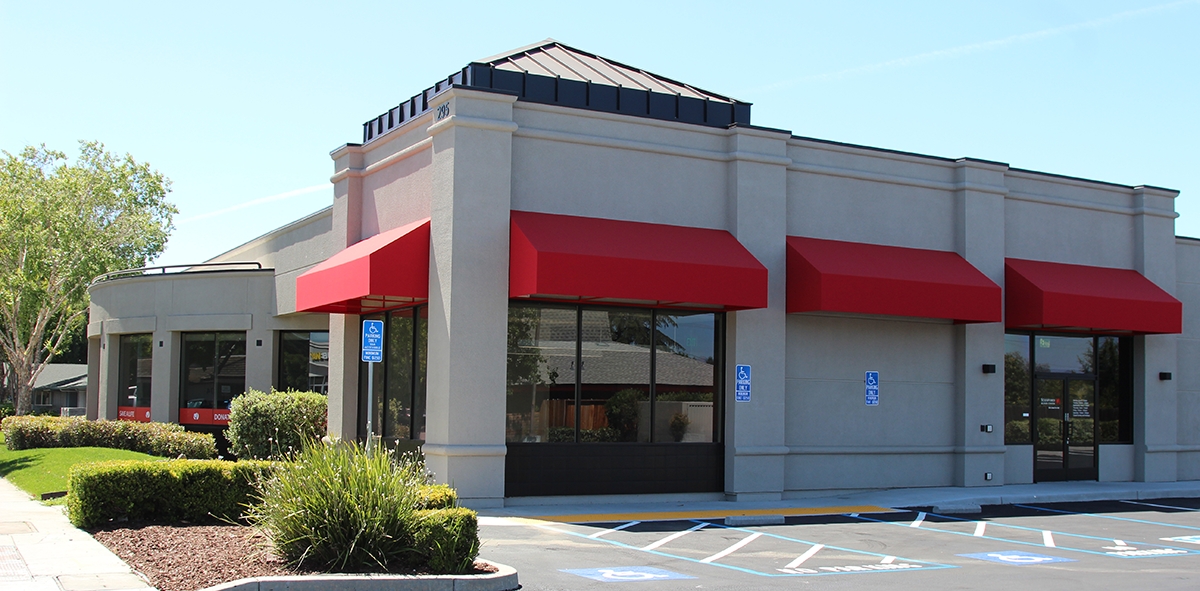About SBC

Stanford Blood Center (SBC) is an independent, community blood center that supplies blood products and testing services to multiple Bay Area hospitals and is a recognized leader in the fields of transfusion and transplantation medicine. SBC was created at the Stanford University School of Medicine in 1978 to meet the complex transfusion and transplant needs of Stanford Health Care and Lucile Packard Children’s Hospital Stanford, as well as provide clinical trial services and specialized blood products for researchers. Today, the center remains locally focused, serving community hospitals, patients and donors, while contributing to research and advancement that impact the world at large.
You can learn more about SBC’s services and milestone achievements on our About Us and SBC Timeline pages.
Locations & Appointments
Stanford Blood Center has donation centers in Campbell, Dublin, Menlo Park, and Mountain View. To schedule an appointment at one of our centers, visit sbcdonor.org or call 888-723-7831. To find a mobile drive, visit stanfordbloodcenter.org/find-a-drive.
- Stanford Blood Center, Menlo Park donor center — 445 Burgess Drive, Suite 100, Menlo Park, CA 94025
- Stanford Blood Center, Mountain View donor center — 515 South Drive, Suite 20, Mountain View, CA 94040
- Stanford Blood Center South Bay donor center — 295 E. Hamilton Avenue, Campbell, CA 95008
- Stanford Blood Center Tri-Valley donor center — 3738 Fallon Rd, Dublin, CA 94568
Blood Donation FAQs
A: To be eligible to donate blood, a person must be 17 and should be in good health; 16-year-olds can donate with parental consent. All donors should weigh at least 110 pounds and must pass the physical and health history examination given prior to donation.
A: An estimated 65% of the U.S. population is eligible donate blood, but less than 5% actually do.
A: There are several blood group systems used for typing blood, the most important of which is the ABO group. The ABO group is made up of four blood types: A, B, AB and O. Another important blood group is the Rh (or D) group, which is either positive or negative. Therefore, just from these two blood groups, we can have a total of 8 types: A-positive, A-negative, B-positive, B-negative, AB-positive, AB-negative, O-positive, and O-negative. Learn more about blood types on our Blood Types information page.
A: Just one pint of donated blood can help save the lives of up to 3 patients. Each whole blood donation may be split into up to three separate components (red blood cells, platelets and plasma) that can benefit local patients in different ways. Blood products are used every day to help patients affected by cancer, blood disorders, accidents, trauma, and other conditions. Learn more about how blood products are collected and used to save lives.
A: One pint of blood can be separated into several components: red blood cells, plasma, and platelets. Depending on need, the plasma can be further made into cryoprecipitate (cryo). Learn more on our Types of Donations/Blood Products page.
A: Red blood cells, White Blood Cells, Platelets and Plasma:
- Red blood cells carry oxygen to the body’s organs and tissues.
- White blood cells are the body’s primary defense against infection.
- Platelets are very small cellular particles that help blood to clot.
- Plasma is the liquid in which all these cells are flowing throughout your body. Within plasma are many proteins, and some of them are involved in helping your blood clot.
- Learn more about the different components and their usages for patients on our Types of Donations/Blood Products page.
A: Currently there is no substitute for human blood.
Approximately, every two seconds someone in the U.S. needs blood.
Stanford Blood Center accepts all blood types. That said, blood centers often run short of type O and B blood. Shortages of all types of blood often occur during the summer and winter holidays, as appointments drop due to travel and illness.
Donors ages 16-18 are eligible for a whole blood donation once every six months (180 days) or a SuperRed (formerly called double red blood cell) donation once every 12 months (356 days). Donors 19 years of age or older are eligible for a whole blood donation every 56 days or a SuperRed donation every 4 months.
A: We have terrific resources on what to expect for first time blood donors (or those who need a refresher) on our First Time Donor page.
Because sterile techniques and products are used during the donation process, you cannot get any blood disease by donating blood.
A: The donor’s body replenishes the fluid lost from donation in 24 hours. It may take up to two months to replace the lost red blood cells. Learn more on our Iron and Blood Donation page.
A:
The following is a breakdown of the ABO type percentages of the U.S. population:
| O-positive | 38 percent |
| A-positive | 34 percent |
| B-positive | 9 percent |
| O-negative | 7 percent |
| A-negative | 6 percent |
| AB-negative | 1 percent |
In an emergency, anyone can receive type O-negative red blood cells, and type AB-positive individuals can receive red blood cells of any ABO type. Therefore, people with type O-negative blood are known as “universal donors” and those with type AB-positive blood are known as “universal recipients.” AB plasma donors can give to all blood types.
A: After blood is drawn, it is tested for ABO group (blood type) and Rh type (positive or negative), as well as for any unexpected red blood cell antibodies that may cause problems in the recipient. Screening tests are also performed for various infectious diseases. Learn more here.
While you may unable to donate, you can help recruit those who can by hosting a blood drive or gathering a group for a center drive. You can also become a volunteer or make a financial contribution.
